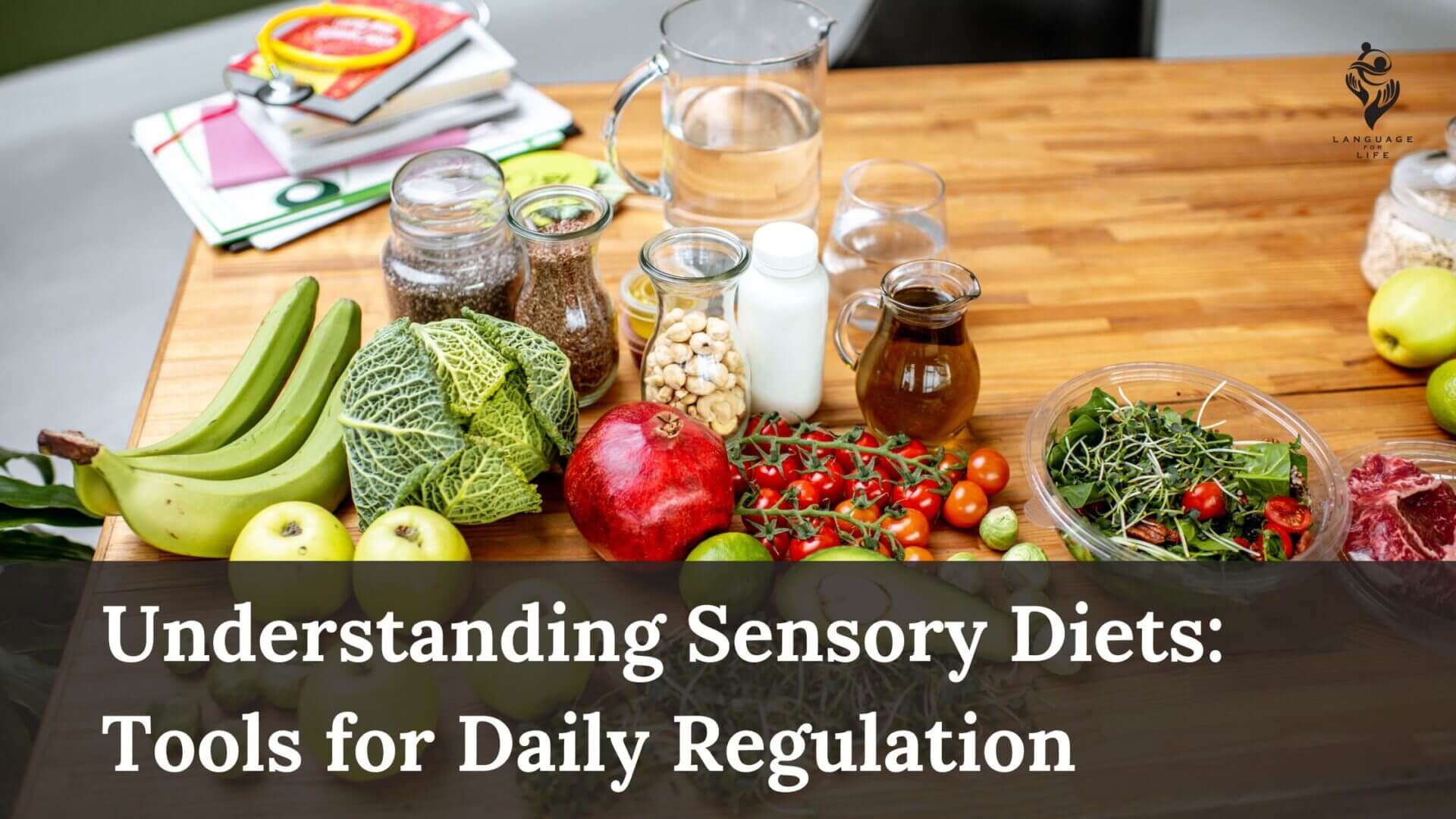Explore what a sensory diet is and how Occupational Therapists design and implement sensory diet plans and implement those with Occupational Therapy sensory strategies to support individuals with emotional and behavioural regulation.
Introduction: What is a Sensory Diet?
While the term ‘diet’ is commonly associated with food and nutrition, a sensory diet refers to something entirely different. It refers to a series of physical activities that are tailored to address the sensory needs of individuals. Further, the sensory diet can be considered as a treatment that helps sensory issues, including overstimulation and responding to sensory stimulation in a negative or avoidant manner. Typically, a sensory diet is a plan designed to benefit children with sensory defensiveness, but adults can also find this helpful to manage sensory issues.
How Occupational Therapists Create a Sensory Diet
“As a therapeutic intervention within Occupational Therapy, sensory diets are developed and implemented by Occupational Therapists in partnership with parents and other relevant caregivers. In the initial stage, the Occupational Therapist spends time with the child to observe and identify emotional and behavioural patterns linked to sensory challenges. As the next step, the schedules of the parents and child, available resources, and key challenges to address are identified. Then, the Occupational Therapist sets goals and designs a sensory diet with targeted strategies. As the final step, the plan is implemented in collaboration with parents and caregivers, ensuring the child or the adult receives consistent support and maximum benefit.
Key OT Sensory Strategies for Daily Regulation
Occupational Therapists use a range of strategies within a sensory diet to help individuals manage sensory challenges. These strategies are designed to be implemented during therapy sessions, at home or at school.
- Pressure input
Deep pressure and proprioceptive strategies can include:
- Swaddling or wrapping in blankets
- Using pillows or weighted items for cuddling or support
- Wearing compression clothing or wraps
- Positioning in supportive wedges
- Applying careful pressure with a gymnastic ball.
Heavy work
Heavy work provides active, pressure-based input to muscles and joints through activities such as;
- Pushing
- Pulling
- Lifting
- Carrying
- Climbing
- Resistance play
- Push-ups
- Functional tasks like vacuuming, stacking
- Riding a bike
Oral motor inputs
- Oral-motor inputs can engage oral proprioceptors through activities such as; Chewing on foods or safe non-food items
- Sucking through resistive or long straws
- Blowing into toys, bubbles, or cotton balls
Breath work
Breath work strategies include activities that involve;
- Sucking and blowing
- Teaching deep-breathing techniques
to help pause, calm, and regulate emotions.
Vibration
Vibration can provide powerful sensory input through;
Vibrating pillows
Electric massagers or toothbrushes
- Producing vibrating sounds like humming
- Feeling music vibrations
- Playing instruments such as harmonicas and drums.
In addition, heavy work through hand activities, rhythmic exercises, quiet time, and community-based activities are often incorporated to support overall sensory regulation by addressing hypersensitivity, hyposensitivity, and sensory-seeking behaviours.
Benefits of a Sensory Diet for Emotions and Behaviour
The sensory diet benefits not only by supporting individuals in managing emotions and behaviour in children and adults. Here are some key benefits offered by the sensory diet to make individuals’ lives feel better and more productive.
Emotional Benefits –
- Activates neurotransmitters and feel-good hormones
- Promotes positive mood
- Manages sensory defensiveness
- Improves self-awareness
- Enhances self-esteem
Behavioural Benefits –
- Improves focus and attention
- Supports learning new skills
- Encourages social interaction
- Minimises disruptive behaviours
- Fosters stronger relationships
By addressing both emotional and behavioural needs, a sensory diet helps individuals build confidence and resilience, paving the way to a more balanced and fulfilling life.
Sensory Diets as a Part of Everyday Life
A sensory diet is a key strategy in Occupational Therapy, designed to help individuals manage sensory defensiveness and improve sensory regulation through tailored activities and physical exercises. Identifying sensory challenges in children or adults can sometimes be difficult, but noticing avoidable or disruptive behaviours is a sign to seek guidance from a professional Occupational Therapist. At Language for Life, our experienced and friendly team creates tailored sensory diets to meet each individual’s unique needs. With early intervention and consistent practice, individuals can achieve faster progress, greater emotional balance, and a more fulfilling daily life.
Take the first step today – visit our clinic or contact Language for Life to be guided by experienced Occupational Therapists and access effective, personalised sensory diet strategies.
References
Introduction to sensory diets (Fragilex PDF, Understood)
The role of Occupational Therapists (Fragilex PDF, Understood)
Strategies (Fragilex Blog, Understood)
Benefits (Crawl Walk Jump Run, Skill Point Therapy)

